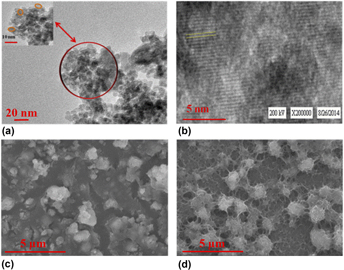No CrossRef data available.
Published online by Cambridge University Press: 24 April 2017

We report results of the studies relating to the fabrication of nanostructured zirconia (nZrO2) based immunosensor for cardiac troponin I biomarker (acute myocardial infarction) detection. One step, low temperature hydrothermal process was used for the synthesis of nZrO2 (∼5 nm). This nZrO2 was functionalized with 3-aminopropyl triethoxy silane (APTES) and thereafter it was electrophoretically deposited on to indium tin oxide (ITO) coated glass electrode. EDC/NHS surface chemistry was used for covalent immobilization of monoclonal anti-troponin-I (anti-cTnI) antibodies onto APTES/nZrO2/ITO electrode. The structural, morphological and functional characterization of the synthesized nanoparticles and the fabricated immunoelectrode were conducted via X-ray diffraction (XRD), transmission electron microscopy (TEM), Fourier transform infrared spectroscopy (FTIR), and electrochemical techniques. The results of electrochemical response studies of BSA/anti-cTnI/APTES/nZrO2/ITO immunoelectrode reveal that, this platform can be used for efficient detection of cardiac troponin I (cTnI) biomarker with a wide linear detection range (0.1–100 ng/mL) and sensitivity [3.9 µA mL/(ng cm2)].
Contributing Editor: Venkatesan Renugopalakrishnan